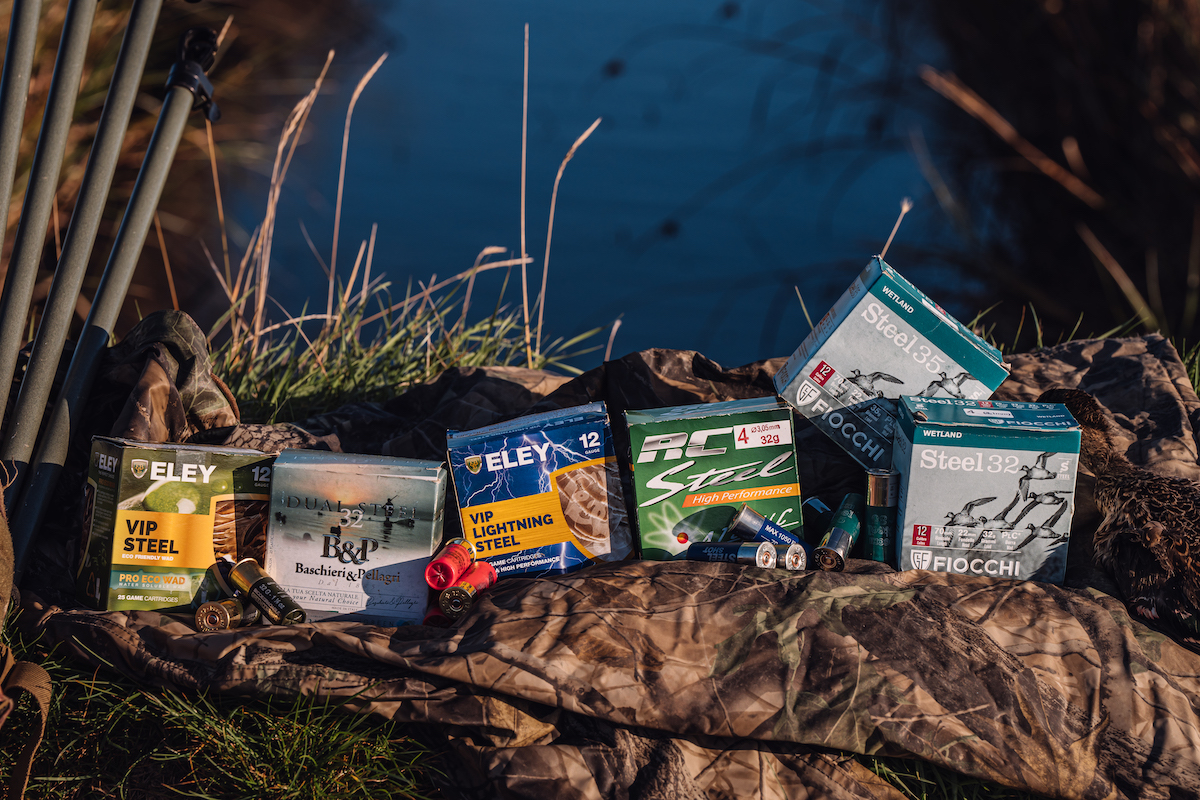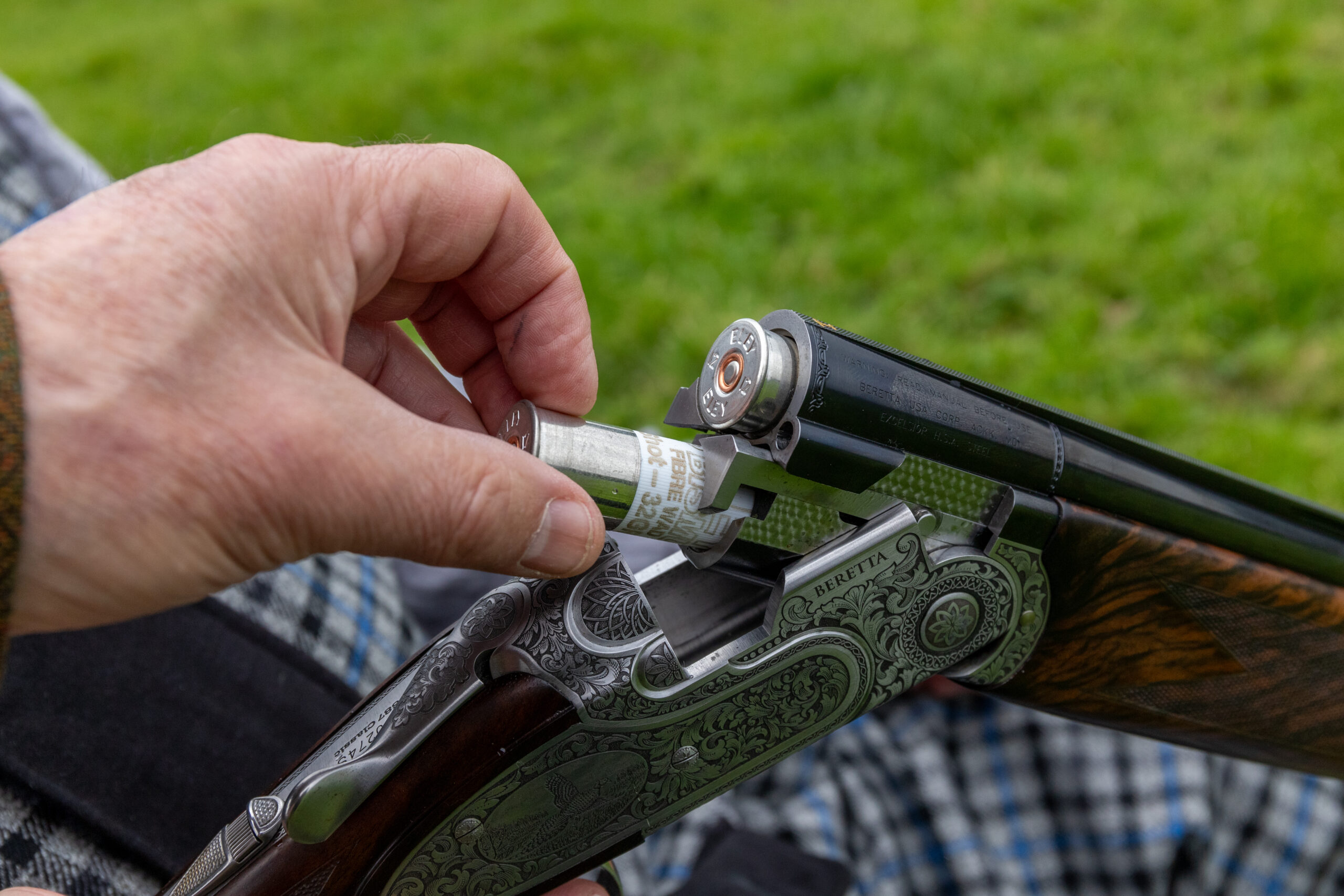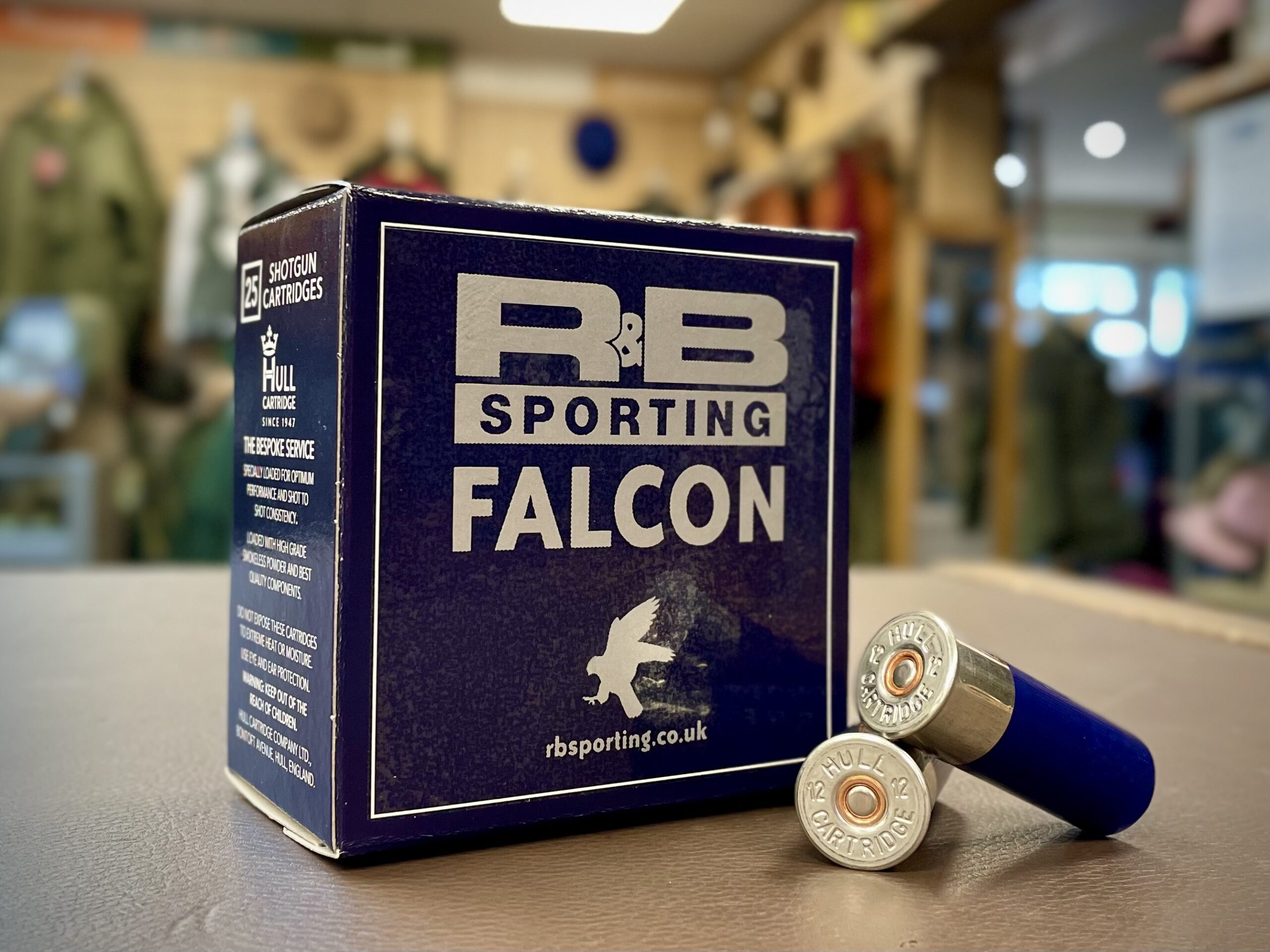Wildfowling cartridges for ducks and geese on test
Richard Negus patterns and trials steel cartridges suitable for ducks and geese, from four quality brands

The cartridges on test came from Eley, Baschieri & Pellagri, RC and Fiocchi
Investigating cartridges for ducks and geese
Now my Hatsan Escort is consigned to pest control duties, a Zabala Hermanos 3 ½in magnum has filled its place as my coastal gun. The scaffold-pole-like barrels sport ¼ and ½ chokes. Teamed with 3in RC Atomic No 1s and No 3s, the gun is a delightful, if somewhat weighty, tool capable of killing geese and ducks at up to 40 yards. Wounding is rare — I either kill or I miss.

Richard Negus calls in a pink-footed goose while out trialling cartridges on the Norfolk marsh
Finding the correct combination of gun, choke and load is a somewhat technical but vital part of equipping yourself for a successful season. Pattern testing is something that most of us mean to do, then forget. How cartridges are stored can affect the pattern significantly as well. (Read our advice on storing cartridges.)
My friend Darren Sizer, who helped me pattern and trial the cartridges for ducks and geese for this review, has long since persuaded me that warming your cartridges prior to a flight ensures your load will work at its maximum potential. Therefore, with all cartridges having enjoyed an evening spent next to the radiator, we set forth on to a Norfolk grazing marsh in the pre-dawn to review some of the best offerings for fowlers.

Mabel retrieves a teal
Fiocchi Wetland 70mm – 32 No 4 steel and 35g No 2 steel
These 2¾in cartridges for ducks and geese are powered by the Italian loader’s powder and primers. They have a maximum working pressure of 1,050 bar, so you will not need a magnum-proof gun, but will require a steel-proofed one. Well made, with a six-star crimp at the end of the dark green case and a silver 22mm head at the business end, they fire crisply with no little recoil. The shot size is even, but on closer inspection, one in 10 of the 204 pellets had odd cracks or were slightly misshapen. The plastic wad starfished evenly. I shot a teal, missing with my first barrel and then killing cleanly with the second. Inspecting the carcass revealed good pellet penetration. Pattern testing at 40 yards with a mod choke revealed 201 pellets in a tight, consistent pattern. It’\’’s a useful, dual-purpose cartridge.
The 35g No 2 is something quite different. The 148 pellets are more consistent, shiny and clean compared with those found in the 4. This is a lot of shot to fit in a 70mm case and a number of the cartridges bulge and ripple as if overloaded. This becomes noticeable when you jam them into the breech.
They fire consistently, however, with no more recoil than the 32g 4. Darren fired this load through his Bettinsoli Waterfowl Camo Max 5 X-Trail with ¾ and 7/8 chokes, killing a decent mallard. Shot penetration was clean and they patterned with 147 on target, again in a tight pattern but blown slightly right.
Baschieri & Pellagri Dual Steel 70mm — 32g no 2 and no 3 combination steel and zinc-plated steel
These look like a premium product. An olive green plastic case and high brass covers a fully biodegradable Green Core wad. The 187 pellets are a combination of size 2 steel and size 3 zinc-plated steel. The idea of dual shot is not a new one and is supposed to provide an even shot pattern and strong killing performance at distance.
Curiously, the box we took to the marsh must have been a bad batch. Darren shot at a hen mallard at a range of no more than 25 yards. I saw the bird well hit, but it flew back on its tail and dropped into a dyke. Looking at the carcass, much of the shot was lodged in the breast feathers with no more than bruising of the skin. It had a broken leg and a head wound showing that the pattern was correct. Two further cartridges produced similar unsatisfactory results, with plentiful unburned powder in the barrels.
The next day, Darren pattern tested a second box by shooting pigeons over emerging rape. He found this box to be totally different to those we had taken to the marsh. They gave a heftier recoil, a near-perfect pattern, clean barrels and killed birds stone dead at prodigious distances. Cutting open the disappointing box, the powder seemed to have stuck to the outside of the wad. Cartridges from the second box revealed no such leakage. The Green Core wad is new technology and may explain this mistake, but it casts shades of doubt over what could, and should, be an excellent cartridge.’

Darren using the Eley Lightning Steel
Eley VIP 70mm — 32g Steel Eco Wad no 3 AND VIP Lightning Steel 76mm 36g No 1
With these two cartridges for ducks and geese , Eley offers up the fowler’s panacea — the same brand, but in loads designed to suit a variety of wildfowl quarry. I have previously reviewed the VIP Steel Eco Wad 3 and found it to be one of the best biodegradable-wad cartridges on the market, a real duck shooter’s load.
The VIP Lightning Steel is a cartridge I had heard of in favourable tones but had never had the chance to try. This is a 3in high-performance cartridge, therefore a magnum-proofed gun is a must. Within a plastic wad sit 129 notably well-polished and perfectly spherical No 1 pellets. A ruby red case with tight-fitting crimp and brass encases it all. Pattern testing saw 116 pellets on target, with a tight pattern.
This bore out on the marsh, with Darren killing a pink-footed goose at what I would judge to be 35 yards. Carcass inspection showed a clean head and neck shot. Later that day, I shot a hare with this load and achieved another clean kill. They do kick like a mule, but with a heavy gun or a semi-automatic this is lessened, and let’s be honest — if a bit of recoil puts you off, then fowling is probably not for you.
It should be noted that this load is not suitable for over-bored guns, and muzzle velocity is 1,430fps. As a rule, these are a killing cartridge for geese. If you fill your pockets with VIP Lightning and your cartridge belt with the Eco Wad 3, you are set fair for a flight.
RC Atomic Line 70mm — 32g HP no 3 and 34g no 3
These cartridges are incredibly fast and hit hard. Darren used the 34g load to kill a pair of teal and one wigeon, the latter was out at around 44 yards, and all were killed cleanly. Carcass inspection showed excellent penetration, with pellets lodged well into the breast.
An olive green 70mm case and brass cap covers even, well-made shot and a photodegradable wad. They are a high-power load, meaning you will need a gun stamped with a fleur-de-lys, but these are a step down from my usual RC Atomic magnum load. For all that, I didn’t notice any significant difference in killing range. Recoil is quite sharp with a muzzle velocity of 1,385fps in the 32g load and 1,355fps in the 34g. I killed a hen mallard out at 38 yards with the 32g, crumpling the bird in fine style.
To my mind, the RC are the pick of this bunch. The powder they use is regarded by many as the best on the market and they are as reliable as a promise from your mother. Darren’s opinion is that the 34g in 1 and 3 is one of the best wildfowling cartridges for ducks and geese he has ever used. Both of us rated the degradable wad, and I have some of these laid out in my garden to discover the rate that they decay over time.

The first box of B&P loads left plentiful unburnt powder in the barrels
Conclusion
The pace of development in steel loads and degradable wads is phenomenal. The manufacturers have been forced into frenzied research and development by the looming cessation of lead. This speed of change has led to occasional performance inconsistencies seen in some of these trial cartridges, particularly with the notably innovative Baschieri & Pellagri.
My main takeaway from this trial is the importance of marrying up your gun, choke and cartridge combination. The good news is that there is now a large range of quality, heavy steel loads available, meaning that with a bit of your own research, the notion of finding the perfect load isn’t such a challenge any more.

Richard returns with his bag








